If you’ve done your warm-ups as suggested in the my other
article on "Preparing Muscles and Joints for Gardening Activity" you’ll now be ready ready to go.
But don’t go at it like a bull at a gate, pace yourself (regardless of
your age) and pause during repetitive tasks to let joints and muscles rest.
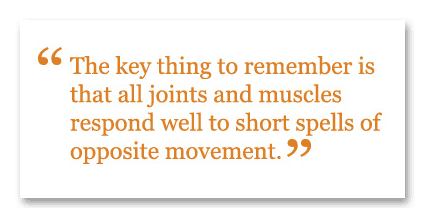
Even young joints don’t like prolonged strain so pause to
rest now and again. You’ll know when,
because your body will tell you, and it may be quite often. Every fifteen minutes is a good target but please don't leave it more than half an hour before resting.
The few minutes you save by
ignoring your body’s call will come back to haunt you with aches and pains the
next day. Is it worth it? I doubt it.
Remember, gardening is not an army assault course, you do
it because you enjoy it !
RSI:
Its called
repetitive strain injury because it is repetitive – unless you break the
pattern of course. Extended pruning with
secateurs is a classic cause.
Just pause now and then to stretch your fingers, hands and
wrists in the opposite direction to the pruning action. Joints will recover, muscles will shed their
fatigue and you’ll be more efficient.
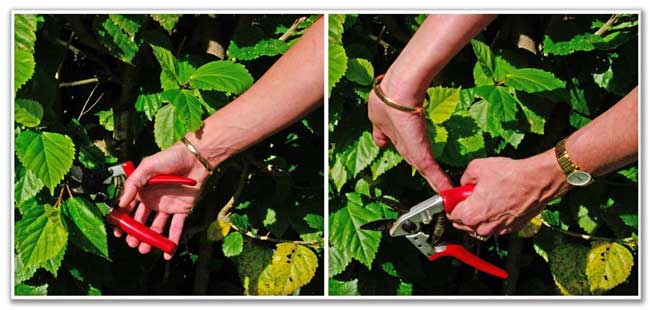
Shoulders:
While pruning or clipping overhead, just pause for a few moments and roll your shoulders down and back in a circular motion for one minute. Remain standing tall during the exercise and keep your chin in.
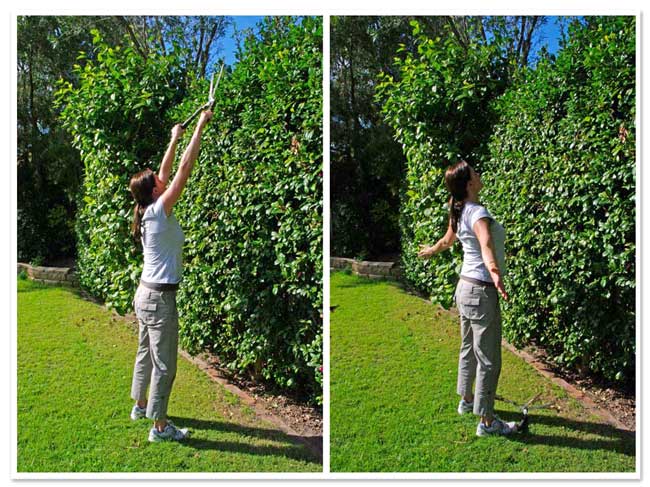
Back:
While digging, raking or bending to weed, stop and
arch your spine and shoulders backwards with hands pushing your pelvis
forwards. It's a classic for very good
reason as it allows the gelatinous content of squashed discs to revert to
balance again.
I see so many patients suffering from lower back pain from gardening, yet this small exercise can prevent so much discomfort.
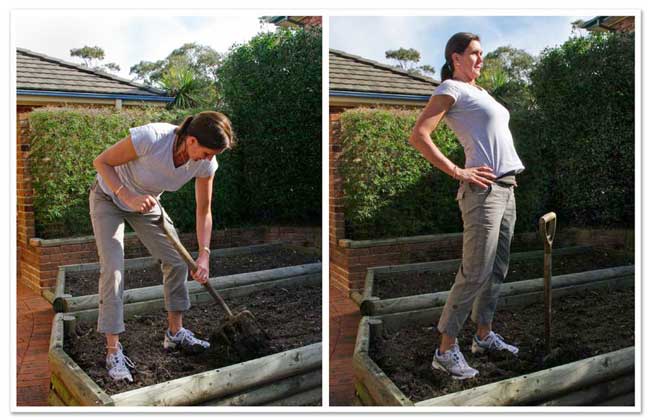
Knees:
Even if you’re wearing kneepads to protect the front
of your knees, the knee joint and surrounding tendons needs rest and opposite action too. Stand up and give them a rub and a wiggle
(that's a technical term for repetitive re-traction by the way).
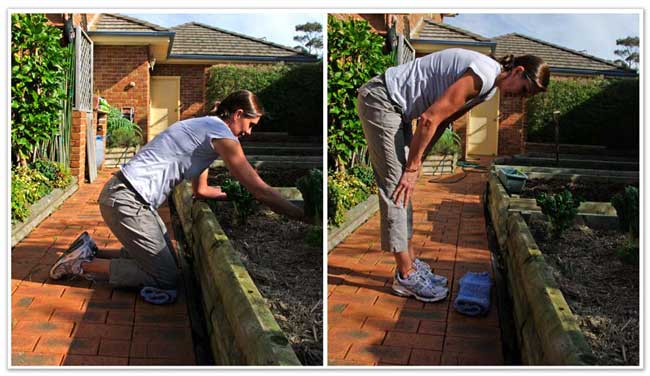
Painful Joints:
Many mature gardeners will suffer some occasional joint
pain, whether it be arthritic or rheumatic. But all joints benefit from movement as it stimulates joint lubrication which in turn provides the nutrition for the joint
linings and cuffs. People who immobilise
tetchy joints do themselves no favours as the joint will become stiff and
produce even more pain. If you have painful joints and decide to do some gardening then warming up first is all the more important as this will minimise the initial discomfort.
But, as with all things to do with health, all movements should be performed in
moderation. Stop if sharp pain persists
and consult a doctor.
Author Note: Catherine Stephens is the principal of Northern Beaches Physiotherapy and Sports Injury Centre and is a passionate advocate of Sustainable Health for all ages.
Address: Level 1, The Dee Why Grand,
Suite 4117, 834 Pittwater Road,
Dee Why, NSW 2099.
Web: www.northernbeachesphysio.com
Tel: 02 9971 2185
Email: info@nbphysio.com